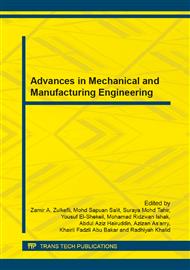p.42
p.48
p.54
p.60
p.66
p.72
p.77
p.83
p.89
Performance and Emission of a Common Rail Passenger Car Engine Fuelled with Palm Oil Biodiesel
Abstract:
This study investigated the effects of palm oil methyl ester biodiesel blends on a common rail passenger car engine in terms of performance, oxides of nitrogen (NOx) and smoke emissions. Up to 40% biodiesel blend was used in this study. As expected, running on biodiesel reduces full load torque and power. The fuel consumption increased up to 10%, particularly at part loads. On the other hand, the thermal efficiency only exhibit small difference between the fuels. As much as 46% reduction in smoke emissions was observed at 40% biodiesel content. The NOx emission was shown to be slightly increased under certain operating conditions at part loads, while showing reduction at other conditions. In general, biodiesel showed more significant effects on the performance and emissions at part load conditions. Thus, low and medium speed/load region was proposed as an area where improvement by injection strategies optimization can be made.
Info:
Periodical:
Pages:
66-71
Citation:
Online since:
June 2014
Authors:
Keywords:
Price:
Сopyright:
© 2014 Trans Tech Publications Ltd. All Rights Reserved
Share:
Citation:


